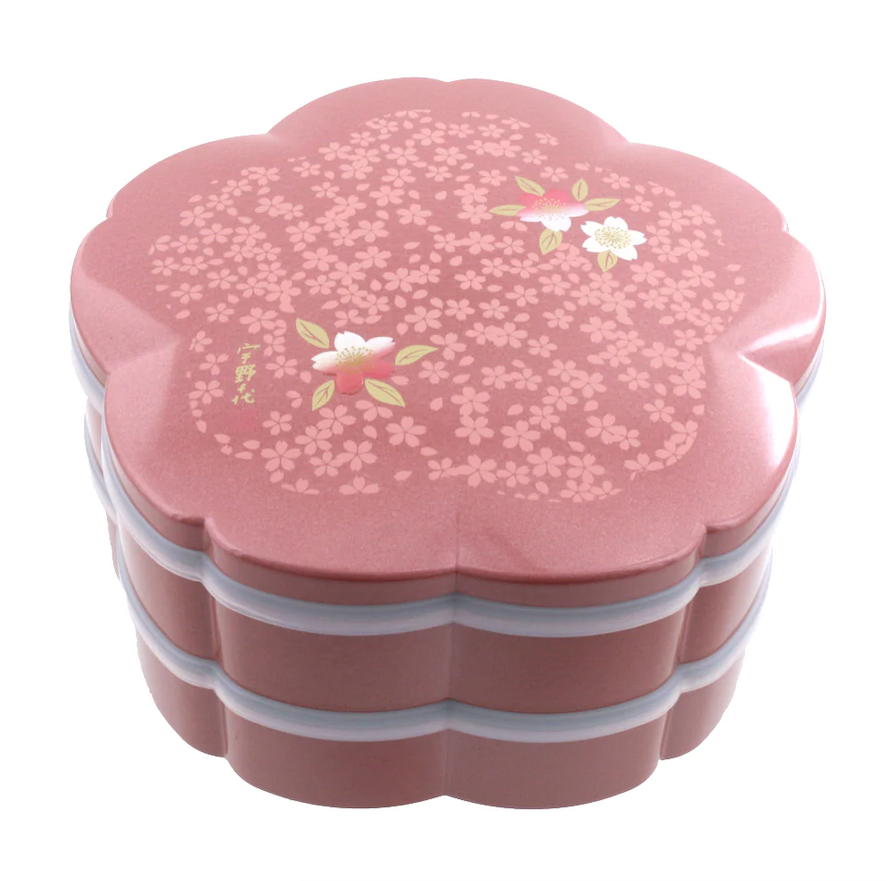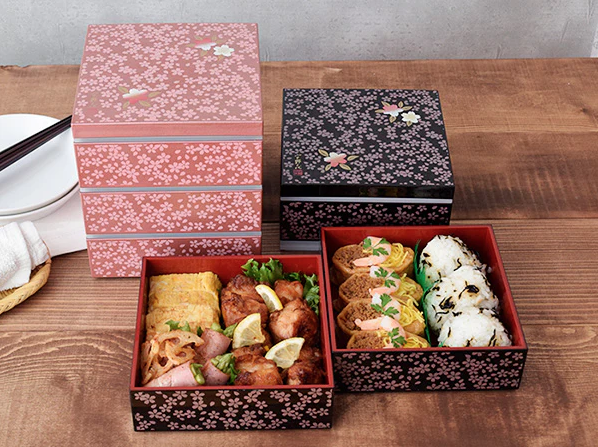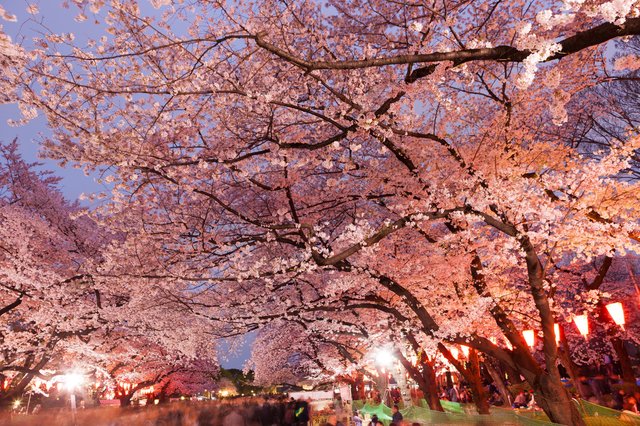Handprinted Japanese Book (Page Selection), c. 1945. Bound rice-paper, polychrome and gold leaf, SC.084
It is officially spring! This means it’s currently Hanami Season in Japan!
As one of the most popular events in the spring in Japan, Hanami, meaning “flower viewing,” is the traditional Japanese custom of viewing and enjoying the beauty of cherry blossoms when they are in full bloom, which happens to be at the end of March until the beginning of May.
Traditionally it’s a festival of food, drink, song and dance. Families will set up blankets and tarps for a picnic, finding the perfect spot for viewing the cherry blossoms can be somewhat competitive, even company groups will send someone out early in the morning to claim the perfect spot.
Cherry blossoms come in many colors ranging from light pink, to white, dark pink, and even yellow and green. Making it the perfect atmosphere for a picnic outing!
Traditionally, picnic food can be carried in a Jubako. The word Jubako means “tiered box,” and are actually traditional, multi-tiered lunch boxes! There can be anywhere from 2 to 5 stacking layers to this type of lunchbox. Most Jubako had 3 layers, but the fancy ones had 4 or 5! We have 2 in our museum collection.
So let’s explore a bit of the tradition behind these unique artifacts! In ancient Japan, these fancy lunch boxes were used to transport food for the samurai and upper classes. They later became more popular and commonly used during the Edo period, though, (which was between the 16-1800’s). And they were used for anything from daily lunches, to special occasions.
The contents of the lunchbox were traditionally eaten cold, and similar to the idea of “courses”- one at a time and in order from top to bottom. It would be typical to tailor the meal to the occasion. So, for Hanami, the foods would be pink in color, or dyed pink to match the Sakura Blossoms. Popular food for Hanami Festivals would include: Hanami dango, a chewy tri-colored treat of pink, white, and green made from rice flour, Cherry Blossom Cookies, Milk pudding, Rice Balls, and sakura mochi, red kidney-bean paste wrapped in a salt-preserved cherry blossom leaf.
Jubako could be crafted from different types of materials..anything from carved lacquered wood to fine porcelain and could be different shapes, as well. Some were cylindrical, some hexagonal or octagonal. Most had really beautiful, intricate painted motifs, though.
Now let’s take a closer look at the Jubako in our museum collection.
Jubako (4-tiered food container) Early 20th century, Porcelain with underglaze cobalt blue. 1981.323
This one is from the late Meiji Period- which dates it to somewhere between 1868-1912.
It’s a 4-tiered round stacked-box made of porcelain with an underglaze of cobalt blue. It’s perched on an intricately carved decorative base.
Because of its materials and sleek design, even though the piece is fully functional it’s also highly decorative.
It was probably only used for important meals at home- like for special occasions or holidays such as the Osechi Ryori Feast– which is a traditional meal enjoyed on New Year’s day.
Jubako (4-tiered food container) 19th century Japanese, Meiji Period (1868–1912). Glazed polychrome porcelain. 2009.004
The second Jubako in our collection from the same time period…but it’s a bit different in style. Imari ware pieces like these were typically decorated in underglaze of cobalt blue- and then red, gold, and black outlining were added in overglaze. This was a very popular and very successful style for Jubako during the late 1800’s.
Note that though it has the same number of tiers as the other one, this lunchbox is wider and a bit more stable- and without a decorative base.
This beautiful piece could have traveled with its owner, possibly to work or on family outings such as Hanami picnics!
Antique Jubako like these of our collection are considered works of art- highly prized for their beauty and craftsmanship.
And Jubako are still used in Japan and around the world even today.
But the materials, style and usage can be quite different. Now you’ll see them made from bamboo, plastic or resin. They can also be purchased in just about any design or fun shape imaginable.
Some come with extra compartments for drinks, and soups, or some more specially designed for picnics and large gatherings. There are even some sakura shaped or themed Jubako especially for use at Hanami gatherings!
I do recommend you explore more traditions of this beautiful festival online.
Even if there are no cherry blossoms nearby, I hope you enjoy a shady picnic outside this spring with your friends and family. It’s one of the best ways to celebrate the new season and all that it brings!
Kellie Bellah
Visitor Services Associate









